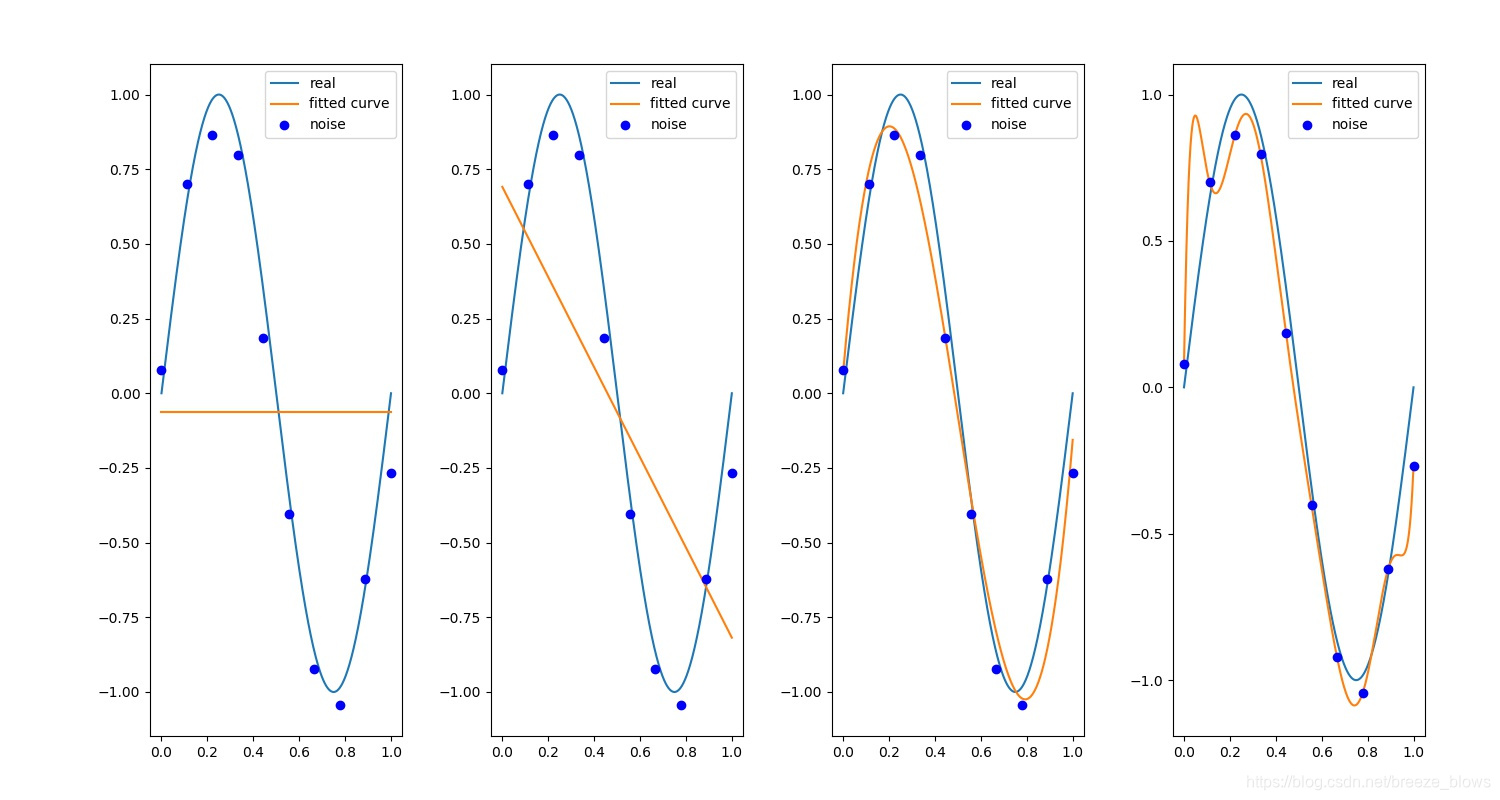第1章 統計學習方法概論(LeastSquaresMethod)程式碼實現
阿新 • • 發佈:2019-01-02
| 上一篇:【目錄】====== 【回到目錄】====== 下一篇:【第一章課後習題參考解答】 |
|---|
import numpy as np from scipy.optimize import leastsq import matplotlib.pyplot as plt # 目標函式 def real_func(x): return np.sin(2*np.pi*x) # 多項式 def fit_func(p, x): f = np.poly1d(p) return f(x) # 殘差 def residuals_func(p, x, y): ret = fit_func(p, x) - y #注意此處沒有平方 return ret regularization = 0.0001 #正則化之後的殘差 def residuals_func_regularization(p, x, y): ret = fit_func(p, x) - y ret = np.append(ret, np.sqrt(0.5*regularization*np.square(p))) # L2範數作為正則化項 return ret # 十個點' x = np.linspace(0, 1, 10) x_points = np.linspace(0, 1, 1000) # 加上正態分佈噪音的目標函式的值 y_ = real_func(x) y = [np.random.normal(0, 0.1) + y1 for y1 in y_] index = 0 plt.figure(figsize=(15, 8)) def fitting(M=0): """ M 為 多項式的次數 """ # 隨機初始化多項式引數 p_init = np.random.rand(M + 1) # 最小二乘法 p_lsq = leastsq(residuals_func, p_init, args=(x, y)) #p_lsq = leastsq(residuals_func_regularization, p_init, args=(x, y)) #加入正則化 print('Fitting Parameters:', p_lsq[0]) # 視覺化 plt.subplot(141 + index) plt.plot(x_points, real_func(x_points), label='real') plt.plot(x_points, fit_func(p_lsq[0], x_points), label='fitted curve') plt.plot(x, y, 'bo', label='noise') plt.legend() return p_lsq for i in [0, 1, 3, 9]: lsq_0 = fitting(i) index += 1 plt.subplots_adjust(top=0.92, bottom=0.08, left=0.10, right=0.95, hspace=0.25, wspace=0.35) #調整子圖間距 plt.savefig("demo.jpg") plt.show()
正則化前

正則化後

可以明顯看出正則化的作用
